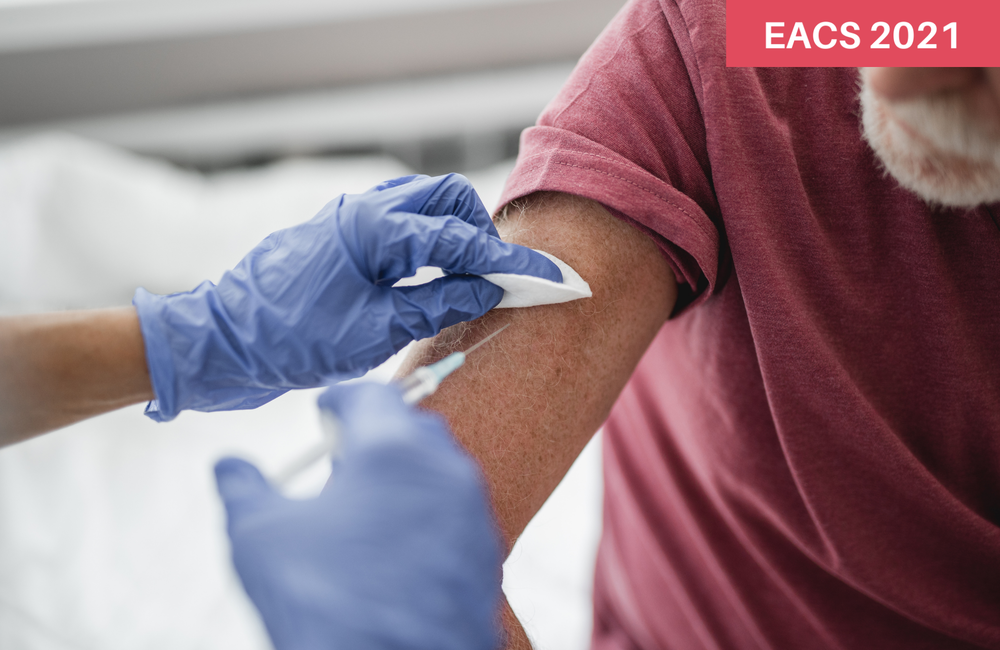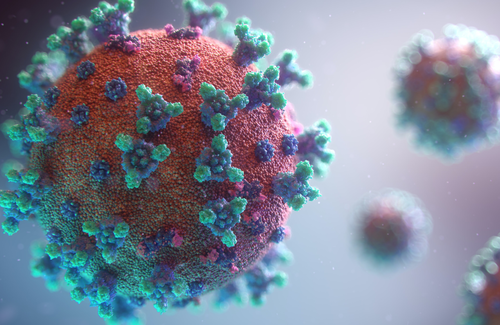
People with CD4 counts below 200 were significantly less likely to generate strong antibody and cellular immune responses to the Pfizer or Moderna mRNA COVID-19 vaccines compared to people with better immune function, Italian researchers reported on Friday at the 18th European AIDS Conference (EACS 2021) in London.
The findings match those of a US study presented at the IDWeek conference in early October, which showed that people with lower CD4 counts were less likely to produce antibody responses after two doses of an mRNA vaccine, especially the Pfizer vaccine.
Public health authorities in the United States and Europe already recommend a third dose of a vaccine against SARS-CoV-2 for people with HIV with immune suppression but there is still a lack of clarity about below which CD4 threshold a third dose is needed.
Dr Andrea Antinori of the National Institute for Infectious Diseases and colleagues designed a study to compare antibody and cellular immune responses after vaccination in people with HIV with severe immune deficiency (current CD4 count below 200), those with moderate immune deficiency (CD4 count between 200 and 500) and those without immune deficiency (CD4 count above 500).
They wanted to establish whether a low CD4 count compromised vaccine responses.
The study enrolled 166 people with HIV at the time of their first vaccine dose, 32 with severe immune deficiency, 56 with moderate immune deficiency and 78 without immune deficiency.
The study population was predominantly male, with a median age of 57 in those with CD4 counts below 200 and 54 years in others.
The median CD4 count in the severe immune deficiency group was 140, compared to 335 in the moderate immune deficiency group and 727 in the group without immune deficiency.
Despite their greater duration of living with HIV (22 years, vs 9 years in the 200-500 group and 11 years in the >500 group) and lower nadir CD4 count (49 cells vs 63 and 174 cells, respectively, p<0.001), people with current CD4 counts below 200 were less likely to have a prior AIDS diagnosis (37% vs 46% and 47%, respectively, p<0.001).
All participants were taking antiretroviral therapy but people with CD4 counts below 200 were significantly more likely to have unsuppressed viral load compared to people with higher CD4 counts (31% vs 7% in the 200-500 group and none in the >500 CD4 group, p<0.001).
The study assessed antibody responses by measuring receptor binding domain IgG antibody levels and neutralising antibody levels after the first dose, before the second dose and one month after the second dose. Cellular immune responses were measured by interferon-gamma release assay, which measures T-cell responses to viral spike peptides, at the same time points.
Antibody levels and neutralisation responses were significantly lower in people with CD4 counts below 200 compared to people with CD4 counts above 200, one month after the second dose. Comparison of antibody responses before the second dose and one month after the second dose showed an approximate tenfold improvement in the level of antibodies in all groups.
By one month after the second dose, all but five of the 166 participants with HIV had detectable antibodies (four in the <250 group and one in the >500 group did not develop antibodies), and the researchers described these responses as “robust”.
On all measures, people with CD4 counts below 200 had antibody or neutralisation measurements approximately one-third of those observed in people with CD4 counts above 500, and these differences were highly statistically significant. For example, the median level of RBD-binding antibodies was 507 Binding Antibody Units (BAU)/ml in people with CD4 counts below 200 compared to 1782 BAU/ml in people with CD4 counts above 500 (P<0.001).
The study also found that although people with CD4 counts in the range 200-500 did not have significantly weaker antibody responses compared to people with CD4 counts above 500, they did have significantly weaker responses compared to a control group of HIV-negative healthcare workers.
Multivariable regression analysis showed that current CD4 count predicted antibody and cellular immune responses to vaccination. A CD4 count below 200 predicted lower antibody numbers and lower neutralising antibody numbers, as well as weaker cell-mediated responses (all p<0.001), after adjusting for confounding factors including age, nadir CD4 count, type of vaccine received, detectable viral load and current or prior malignancy.
Lower antibody numbers after the second vaccine dose imply a greater need for a third dose. Further research is needed to clarify the impact of a third dose in people with low CD4 counts, on both the level of antibody response achieved and the speed at which antibody levels decline after a third dose.
A second Italian research group looked at the incidence of side effects after receiving the Moderna vaccine in 453 people with HIV receiving care at the San Paolo Hospital HIV clinic in Milan. The recording of side effects was dependent on patient report; 396 people reported after the first vaccine dose, 371 after the second dose. Side effects were common; 51% reported at least one symptom after the first dose and 73% after the second dose. No serious adverse events were reported. The local and systemic reactions to vaccination were consistent with clinical trials; pain, swelling and redness at the injections site, and muscle pains, headaches, chills and fevers.
Multivariable analysis showed that younger people were more likely to experience moderate or severe symptoms after each dose, while women and people with viral load above 50 copies/ml were more likely to experience moderate or severe symptoms after the first dose.
Antinori A et al. Immunogenicity of mRNA vaccination against SARS-CoV-2 in persons living with HIV (PLWHs) with low CD4 count or previous AIDS. 18th European AIDS Conference, London, abstract OS3/3, 2021.
View the abstract on the conference website.
Update: Following the conference presentation, this study was published in a peer-reviewed journal:
Antinori A et al. Humoral and Cellular Immune Response Elicited by mRNA Vaccination Against Severe Acute Respiratory Syndrome Coronavirus 2 (SARS-CoV-2) in People Living With Human Immunodeficiency Virus Receiving Antiretroviral Therapy Based on Current CD4 T-Lymphocyte Count. Clinical Infectious Diseases, 75: e552–e563, July 2022.
https://doi.org/10.1093/cid/ciac238
Tomasoni D et al. Reactogenicity of mRNA-1273 vaccine in people living with HIV (PLWH): a prospective study. 18th European AIDS Conference, London, abstract OS3/4, 2021.

